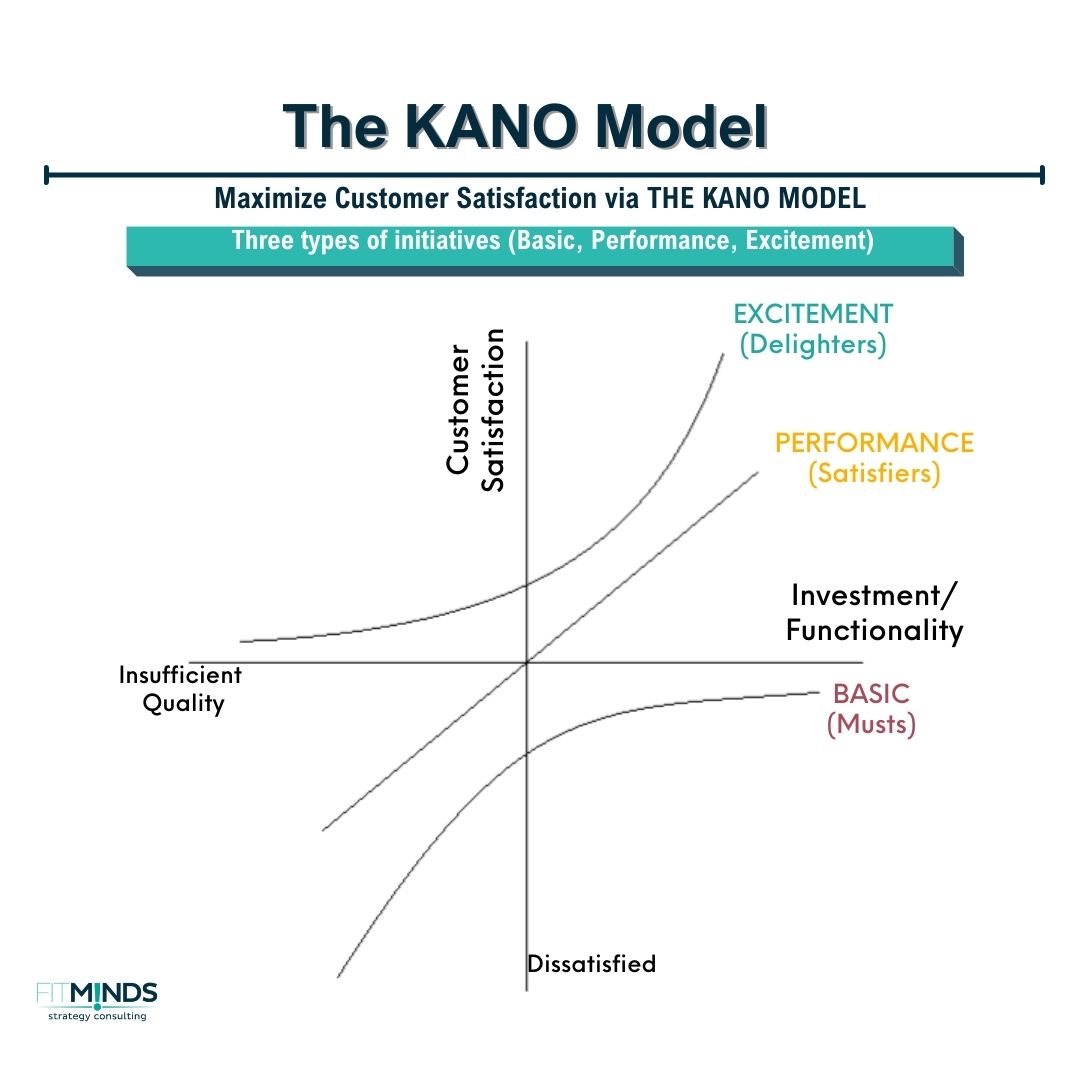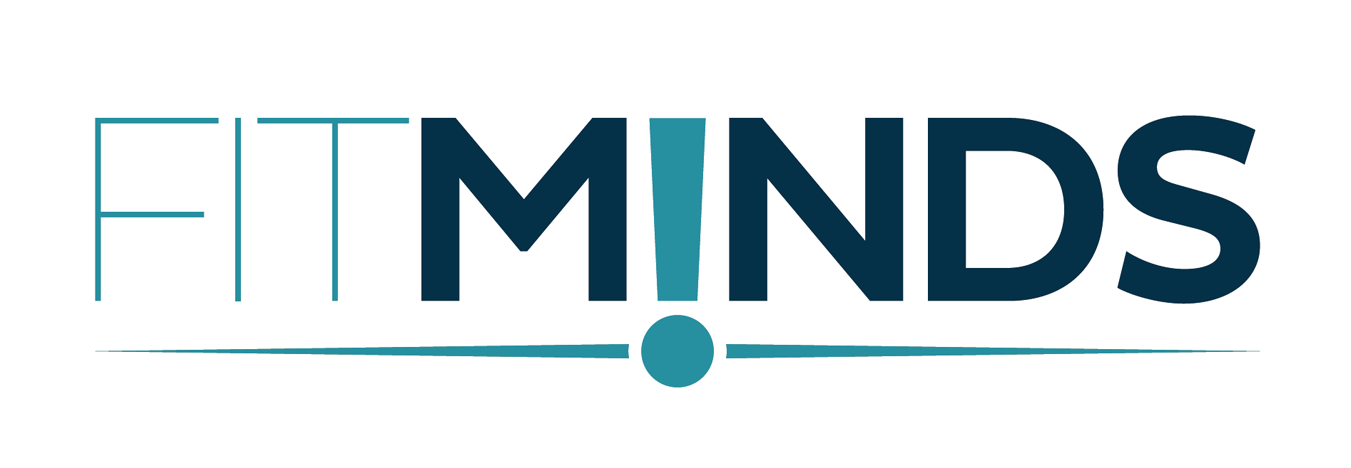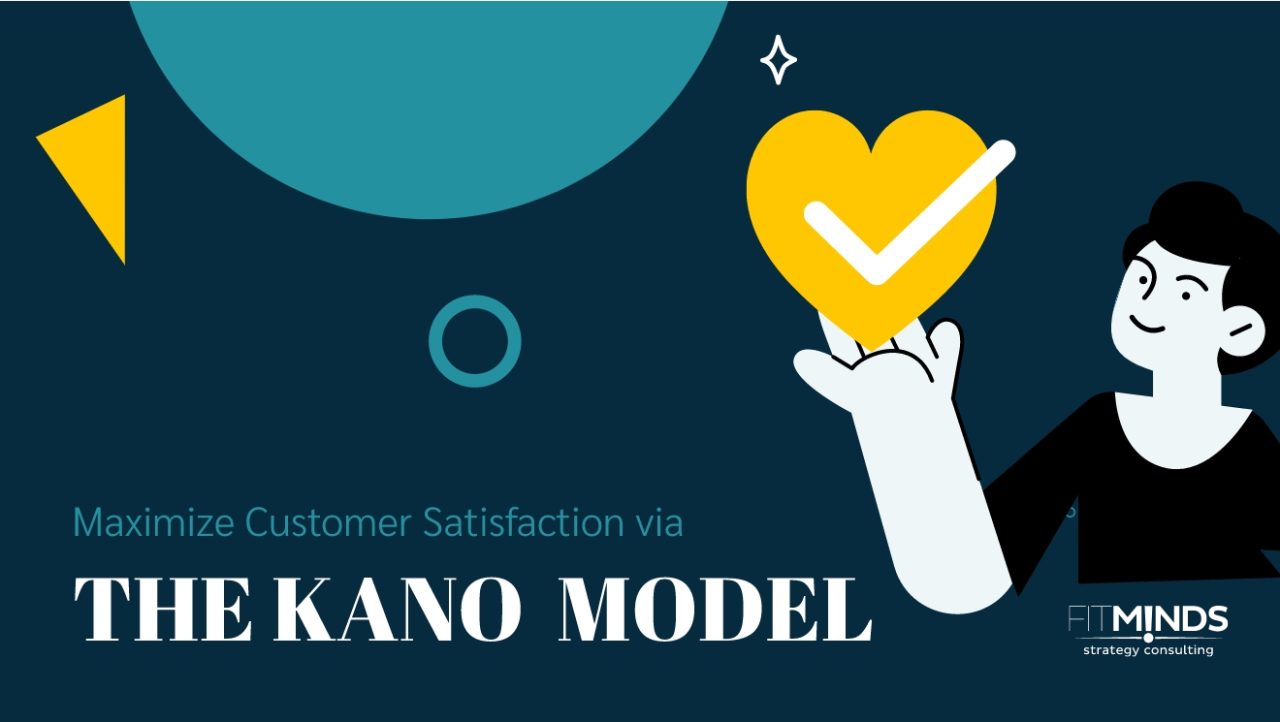The Kano Model is a customer satisfaction framework that categorizes and prioritizes customers’ needs. Dr. Noriaki Kano, an educator, lecturer, writer, and consultant in the field of quality management, created the Kano Model in the 1980s.
Main Benefits of The KANO Model
The Kano Model helps companies understand customer preferences and make informed decisions regarding the prioritization of features in their offerings.
The KANO Model helps you:
- to identify the features that will not only satisfy but also bring delight to customers,
- to tailor your products to meet customer needs and preferences more effectively,
- to foster customer loyalty,
- to allocate resources more effectively.
Explanation of The KANO Model
Within the Kano model, product and service quality attributes are classified into five distinct types:
Must-be Quality/ Basic Needs
One-dimensional Quality/ Performance Needs
Attractive Quality/ Excitement Needs
Indifferent Quality/Neutral Needs
Reverse Needs
Must-be Quality/ Basic Needs: These represent fundamental necessities that customers anticipate as a basic standard. When executed effectively, customers maintain a neutral stance, but when not met, they result in dissatisfaction.
One-dimensional Quality/ Performance Needs: These attributes result in contentment when met and discontent when unmet. The fulfillment of these needs corresponds directly to the level of customer satisfaction.
Attractive Quality/ Excitement Needs: These are features that customers may not normally expect. These qualities result in satisfaction when fully achieved, yet their absence doesn’t trigger dissatisfaction. As these unexpected quality attributes pleasantly surprise customers, they are often not explicitly expressed.
Indifferent Quality/ Neutral Needs: These are aspects that are neither good nor bad, and they don’t influence customer opinions significantly.
Reverse Needs: These characteristics indicate that a high degree of achievement can lead to dissatisfaction, and they also acknowledge that not all customers have the same preferences. Customers would rather these features not be present in the product or service.
With the Kano Model, product teams create a list of possible new features that are competing for resources.
Under the Kano Model, there are three types of initiatives that could be included in your product roadmap:
Basic Features: These are essential for competitiveness.
Performance Features: These features provide a proportional increase in customer satisfaction as you invest in them.
Excitement Features: These features generate a high level of customer delight as you invest in them. By classifying these features and collecting user input, product teams can enhance customer satisfaction.

How to Apply The KANO Model
To apply The KANO Model to your business, FITMINDS is providing an adoption of the model that fits your company and your company’s needs. By using The KANO Model, organizations can make more informed decisions regarding the prioritization of features in their offerings.
Contact us to get more information or discover your probable personalized roadmap for The KANO Model
Additional Tips and Readings
- You can learn more about customer engagement with The Brand Essence Wheel.
- For methods of customer behavior, you can read The Buy-Sell Hierarchy Model.
- To read more about customer habits, you can check The Value Proposition Canvas.
- You can read The Lean Startup Method for a better understanding of customer needs.
Contact us to create effective marketing strategies via The KANO Model.



13 comments
Pingback: order androxal without a prescription
Pingback: discount enclomiphene uk buy cheap
Pingback: how to order rifaximin generic europe
Pingback: get xifaxan usa buy online
Pingback: online order staxyn generic europe
Pingback: buy avodart cheap canada
Pingback: ordering dutasteride lowest price
Pingback: discount flexeril cyclobenzaprine lowest price
Pingback: how to order gabapentin price australia
Pingback: kamagra bez lékařského předpisu žádné poplatky nepřiměřeně vysoké
Pingback: kamagra le numéro 800 pour passer commande
Pingback: get fildena cheap canada
Pingback: buying itraconazole generic does it work
Comments are closed.